Civilization Lesson Plan

Lesson Plan Mindmap for Civilization – Click to Enlarge
CLICK ICONS TO JUMP DIRECTLY TO EACH SUBJECT ON THIS PAGE








CIVILIZATION LESSON PLAN
This page is a free-shared lesson plan archive for teaching all educational subjects within the context and theme of “Civilization”. It is purposed for use in community education environments, homeschool environments, traditional schooling environments, or as a supplemental and fun addition to any education program. As part of the complete Education for Life Program, this lesson plan is specifically designed to work in conjunction with the other components: Foundations of Teaching, Curriculum, Teaching Strategies, Learning Tools and Toys, Evaluation Model, and The Ultimate Classroom. If you’d like to learn how all these components work together, click here. Click here for the specifics focused on just using the lesson plans:
CLICK HERE FOR A DETAILED TUTORIAL ON HOW TO USE THIS LESSON PLAN
NOTE: The colors are provided as a possible linear progression (red/easiest to violet/most challenging) for people that might prefer a more linear structure. Our core philosophy, however, is that through creativity every color can be made easy or challenging for any learning level.
RELATED PAGES (mouse-over for descriptions and click for complete pages)
EDUCATION OVERVIEW | HOW TO USE THIS COMPONENT | OUR OPEN SOURCE PURPOSE
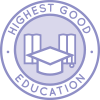
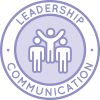
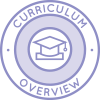
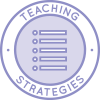
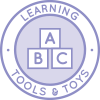
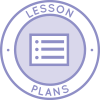
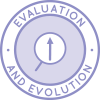
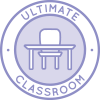
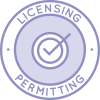

WAYS TO CONTRIBUTE TO EVOLVING THIS EDUCATION PROGRAM WITH US
SUGGESTIONS | CONSULTING | MEMBERSHIP | OTHER OPTIONS
A NOTE ABOUT ALL ONE COMMUNITY LESSON PLANS
The One Community lesson plans are intentionally designed for use in ANY educational environment and with ALL educational, cultural, religious/spiritual, and philosophical approaches to teaching and learning. They are designed without an ideological approach and specifically so they can be adapted to include the views, preferences, methodologies, and/or ideologies preferred by different parents and teachers.
For maximum flexibility and adaptation, they are also designed to be combined to teach multiple subjects at the same time. Doing this increases the creativity, effectiveness, and fun of your learning environment. Once we are on the property and operating our version of the complete school and Education for Life program, we will be adding video examples of how to combine the lessons. In the meantime, visit the Teaching Strategies page for a list of suggestions.
ARTS AND TRADES
CLICK HERE FOR THE COMPLETE SUBJECT OUTLINE FOR ARTS & TRADES
 | TEACHING ARTS AND TRADES WITHIN THE CONTEXT OF CIVILIZATION |
 | Art from Ancient Civilizations around the World- Choose an ancient civilization from a different continent. Go online and find an art piece you like. Have it printed out in black-and-white and in outline-only mode. Then color it in with crayons, paints or whatever medium you like.
- Choose an ancient civilization from a different continent. Go online and find some examples of art from this ancient civilization. Create a collage* or other visual representation using some of the examples you find.
- Choose an ancient civilization and look for a piece of art that you would like to try to replicate or reinterpret. Then make your new piece of art*, being careful to give credit to the original tradition and avoid cultural appropriation.
- Choose a piece of art from an ancient civilization to study in depth, view it at a museum, if possible. Create detailed sketches* and explore the historical and artistic context of this piece. What is the story behind the piece? Try to convey this story to others with your sketches* and other materials.
- Choose two ancient civilizations, both from different continents. Research and create a piece of pottery* that incorporates visuals from both traditions and explain your choice of traditions, techniques/materials used. Be sure to give credit to the original tradition and avoid cultural appropriation.
- Choose one ancient civilization from each continent and create a visual series* displaying artistic themes that can be found in those civilizations. Take care to explore and document any marked similarities. Account for these. Include explanations to allow others to understand your series.
- Choose at least three ancient civilizations, then view their art. What problems (social, environmental…) are documented in their artwork, and the solutions? Think of ways in which this ancient knowledge could benefit community builders and others today. Write a well-researched essay*, and after completion create a set of postcards* that could be used to share your findings with others.
Art from Modern Civilizations around the World For each bullet above, to instead study modern civilization, either replace the study of an ancient civilization with a modern civilization or do a comparison between the ancient and modern version within the same geographic location and/or culture. |
 | Trades in Ancient Civilizations- Research some clothing and/or patterns from an ancient civilization of your choice. Draw a picture* of the piece you would like to wear.
- Choose one ancient civilization and explore the jewelery they wore. Using what you have learned as inspiration, create your own jewelery piece* using materials of your choice.
- Choose one ancient civilization and explore the makeup and hairstyles used in their art. Try to recreate* the look using makeup, on either yourself or another person, being careful to respect the tradition from which the look was derived. Take a photo and present* what you learned.
- Choose at least one ancient civilization from a different continent and explore their textiles. What materials were used and how? Create your own bag* or piece* displaying what you have learned.
- Choose at least one ancient civilization from a different continent and explore their architecture. What are the similarities and differences from modern architecture? Create your own renderings* (by hand or by computer) of a wall or piece from that civilization.
- Choose at least two ancient civilizations and explore their views of crime and how to prevent crimes from being committed. Write a well-researched essay* comparing these paradigms to one another and to the legal paradigm currently used in your country.
- Choose an ancient civilization and explore the traditional medicinal knowledge that has been passed on. How does their view of various illnesses, mental issues, nature and other things different from Western medicine? How could people today benefit from their paradigms and knowledge? If possible, interview a modern-day practitioner of such traditional practice, and if you have interest try to receive some treatment and document your experience. Share your knowledge with others in a workshop*.
Modern Civilizations
For each bullet above, to study modern civilization instead of ancient, either replace the study of an ancient civilization with a modern civilization or do a comparison between the ancient and modern version within the same geographic location and/or culture. |
| CLICK HERE TO EMAIL US IF YOU HAVE AN IDEA TO ADD TO THIS SECTION |
* Please note that anything with an asterisk is just a suggestion. The diversity of options with asterisks are interchangeable and purposed to stimulate your own ideas. Any one of these suggestions could be replaced with a written paper, any form of art project (drawing, painting, music, paper mache, clay, wood, knitting/embroidery, metals, etc. etc.), an experiment, a presentation, a mindmap, a computer program, a web design project, a piece of poetry or a song, an interpretive dance or play, a group project, or anything else. What we feel is most important is that both the Learner and the Teacher agree on an exercise/activity they both feel would be maximally engaging, fun, and effective. If you come up with an idea we haven’t already thought of, please share it with us.
ENGLISH
CLICK HERE FOR THE COMPLETE SUBJECT OUTLINE FOR ENGLISH
Note: Any language can be substituted for English. The subject is listed here as “English” because that is the primary language of most of the people on the team, and the official language of the country we’re building our initial location in.
 | TEACHING ENGLISH WITHIN THE CONTEXT OF CIVILIZATION |
 | English (General)- With the help of the internet or library, create a 5-paged picture book* about an ancient civilization. On each page, include 1- 2 pictures and at least one sentence for each picture.
- Choose a specific time in history and imagine living in a specific ancient civilization. Write a short story* about your experience in that ancient civilization, for example, by being transported back via a time machine or in a dream?
- Choose a work of art depicting a specific time in history in a specific civilization from a different continent. Using this work of art as inspiration and carrying out additional contextual research if necessary, write a poem* of any type.
- Write a 3-5 page essay* comparing and contrasting at least two books about lost civilizations (i.e. Plato’s Timaeus and Critias). Include your opinions and thoughts.
- Write a book review* about The Great Voyages of Zheng He, The Odyssey or Iliad, The Aneid, The Travels of Ibn Battuta, Tales of Ancient Egypt or another work of literature about ancient civilizations. Note the historical and cultural context in which the work was written by the author and what information about ancient civilizations you find interesting.
- Read Beowulf or another work of literature in Old English. Create a presentation* which summarizes the storyline and explores the Old English language, including the historical context in which Old English developed and evolved.
- Write a 5-10 page in depth research paper* about the various mediums that civilizations used across time to capture and spread their literature, how/why they changed over time, and how that medium affected their ability to pass on knowledge and / or culture. If focusing on a single region, place additional focus on explaining how the stories themselves evolved over time throughout that particular civilization.
- Create a college or university level lecture* about Old English versus Middle English. Include in the discussion at least one work from each of the types of English literature, as well as the historical, linguistic, and cultural context in which such literature developed.
|
 | Linguistics- Introduction to Languages Across Civilizations- Choose one language that uses the Latin alphabet and locate a dictionary, either online or a book. With an adult or someone knowledgeable in this, go through the dictionary to find at least five words you recognize from your knowledge of the English language. Make a list* of these words, and share the words and what you learned with others.
- Using your English-language dictionary or knowledge of the English language, make a list* of at least ten loanwords from other languages. Using an online translator or dictionary, or a hard copy at the library, find out what those words actually mean in the original language. Are the meanings the same as in English? Include the answer to that question, and the definitions, for each word in your list.
- Choose another language, and using a dictionary or translator, make a list of at least 20 loanwords that were borrowed from the English language. Write a short piece* explaining the historical and social context in which such words were borrowed.
- Write an exploratory article* about some differences between the English language used in at least two different places that are far removed from each other, and explanations about why each difference exist.
- Write an essay* exploring the link between Celtic languages and the English language.
- Create a presentation* exploring the link between various languages, dialects and accents which exist in Great Britain. Include the historical context in the explanation.
- Write a university level paper* on how various civilizations have influenced the development of the English language (vocabulary, word usage, grammar) providing concrete examples along with their historical contexts.
|
| CLICK HERE TO EMAIL US IF YOU HAVE AN IDEA TO ADD TO THIS SECTION |
* Please note that anything with an asterisk is just a suggestion. The diversity of options with asterisks are interchangeable and purposed to stimulate your own ideas. Any one of these suggestions could be replaced with a written paper, any form of art project (drawing, painting, music, paper mache, clay, wood, knitting/embroidery, metals, etc. etc.), an experiment, a presentation, a mindmap, a computer program, a web design project, a piece of poetry or a song, an interpretive dance or play, a group project, or anything else. What we feel is most important is that both the Learner and the Teacher agree on an exercise/activity they both feel would be maximally engaging, fun, and effective. If you come up with an idea we haven’t already thought of, please share it with us.
HEALTH
CLICK HERE FOR THE COMPLETE SUBJECT OUTLINE FOR HEALTH
 | TEACHING HEALTH WITHIN THE CONTEXT OF CIVILIZATION |
 | - Brainstorm with others you know about herbal tea and other plant-based remedies those around you have used, until you have collected at least five. Find out what countries, regions, or cultures those remedies are originally from and make a simple chart* of this information.
- Label a blank map of the world*for areas of origin or current growth for 30+ traditional, plant-based remedies from 5+ civilizations in varying regions, by researching using the Internet, the library and those you know as resources for this project.
- Write an essay* exploring the Roman system of public health and how this has affected the current system your are familiar with.
- Make a poster* showing 3+ ancient hospital-based systems (e.g. Greek, Byzantine) and any alternatives existed alongside those systems.
- Write a paper* about the historical exchange of medical knowledge (remedies, instruments, techniques, etc.) between ancient cultures, such as Egypt and Persia, China and South Asian countries.
- Read a novel about a health related idea and civilization that has a movie based on it, such as the novel The Physician by Noah Gordon and the German film based on it. Study the history as well, and write a review* on the historical accuracy, or inaccuracy you find, of both the novel and the film.
- Write a university-level paper exploring the contributions health systems from other civilizations (e.g. Ayurvedic medicine, traditional Chinese medicine, folk medicine of Brazil, traditional medicine in various African countries) have made to modern, Western medicine, the recognition these traditional health systems are now receiving from some in the scientific community and the promises some believe these systems hold towards curing multiple ailments.
|
| CLICK HERE TO EMAIL US IF YOU HAVE AN IDEA TO ADD TO THIS SECTION |
* Please note that anything with an asterisk is just a suggestion. The diversity of options with asterisks are interchangeable and purposed to stimulate your own ideas. Any one of these suggestions could be replaced with a written paper, any form of art project (drawing, painting, music, paper mache, clay, wood, knitting/embroidery, metals, etc. etc.), an experiment, a presentation, a mindmap, a computer program, a web design project, a piece of poetry or a song, an interpretive dance or play, a group project, or anything else. What we feel is most important is that both the Learner and the Teacher agree on an exercise/activity they both feel would be maximally engaging, fun, and effective. If you come up with an idea we haven’t already thought of, please share it with us.
MATH
CLICK HERE FOR THE COMPLETE SUBJECT OUTLINE FOR MATH
 | TEACHING MATH WITHIN THE CONTEXT OF CIVILIZATION |
 | - Find out what the Arabic numbers 1 to 10 are in a the system of a different civilization (e.g. Chinese, Mayan, Greek, Babylonian, Roman). Make a poster* of the symbols.
- The number 0 (zero) originated in India and was introduced by the Arabic system, although the Mayans also used it. Imagine if you were to carry out mathematical operations without the number zero and compile a list* of examples of things you could not do without this number.
- Compile a list* of 10 mathematical artifacts from various ancient civilizations, such as the Ishango bone, and make a speech o demonstration to describe the usage of 3 of them.
- The Yoruba system, developed in what is now known as Nigeria, was based on units of 20 instead of 10. Do some research on the system and create an infographic*showing 10 mathematical operations, comparing them with operations we use in our current system based on 10s..
- Babylonian mathematics used a numeral system with the base of 60 instead of 10. Using a word cloud*, brainstorm some things you know are still counted in 60s and then look online or at a book in the library to see if there are any that you did not know about.
- Using online and/or in library tools, explore the metric systems used by at least one ancient civilization of your choice and compare it to the system used today. Create a visual aid* to display this information and compare it to the system others chose to study.
- Using online and/or in library tools, explore the time-telling systems used by at least one ancient civilization of your choice and compare it to the system used today. Create a visual aid* to display this information and compare it to the system others chose to study.
- Where does the word algebra come from? Explore the story of Ibn al-Haytham and the “Alhazen problem”. Create a visual aid.*
- Choose one ancient civilization and make a poster presentation* showing its mathematical system and contributions to the system used today.
- Choose two civilizations and compare/contrast their use of mathematics in the architecture of well-known monuments (e.g. pyramids from different civilizations, such as the Meroitic King Amanikhabali’s pyramid). Write an essay.*
- Various civilizations have looked to the stars, planets and the moon, and used mathematics to interpret their movements for navigational purposes. Choose one system to focus on, or select at least two to compare and contrast, and create a first-year college- or university- level lecture or workshop.*
|
| CLICK HERE TO EMAIL US IF YOU HAVE AN IDEA TO ADD TO THIS SECTION |
* Please note that anything with an asterisk is just a suggestion. The diversity of options with asterisks are interchangeable and purposed to stimulate your own ideas. Any one of these suggestions could be replaced with a written paper, any form of art project (drawing, painting, music, paper mache, clay, wood, knitting/embroidery, metals, etc. etc.), an experiment, a presentation, a mindmap, a computer program, a web design project, a piece of poetry or a song, an interpretive dance or play, a group project, or anything else. What we feel is most important is that both the Learner and the Teacher agree on an exercise/activity they both feel would be maximally engaging, fun, and effective. If you come up with an idea we haven’t already thought of, please share it with us.
SCIENCE
CLICK HERE FOR THE COMPLETE SUBJECT OUTLINE FOR SCIENCE
 | TEACHING SCIENCE WITHIN THE CONTEXT OF CIVILIZATION |
 | Life Sciences- Make a picture* of where you think the word Biology comes from, and then find out the true origin using online or library tools.
- Using an illustration based on the Original Chinese Copper Man and a modern resource on human anatomy, use colored pens or pencils to locate at least five points and describe* what internal organs or structures they correspond with.
- Study some farming techniques of two ancient civilizations of your choice, and in a 2 to 3 page essay* describe what these techniques showed about their knowledge of life sciences (e.g. Incan method “the Three Sisters”).
- Using online or in library resources, find out about the ancient Egyptian practice of mummification. Show what it reveals about their knowledge of the human anatomy and plant properties. Create a visual aid.*
- Find out about how Galen of ancient Greece depicted the human anatomy, and compare this to the Ayuredic system and its Three Humors. Create a visual aid.*
- Explore ancient botanical knowledge, including medicinal uses for specific plants, using a book written by someone in the culture or an article such as “The Lost Sciences of Africa: An Overview” by Van Sertima as starting point. Create a poster* presentation of 50+ plant medicinal uses.
- Explore the botanical and zoological knowledge preserved by Assyrians and Babylonians. Write an essay.*
- Explore what ancient Chinese civilization knew about silkworms, insects in general and biological control. Write an essay.*
- Write a report* exploring the biological knowledge of Avicenna.
- Write a report* exploring Anatomy in Ancient China, including its relationship to acupuncture points and current knowledge of the human anatomy.
- Compare the knowledge of the human anatomy of at least two ancient civilizations. Create an online lesson* for first-year college or university level students.
|
 | Physical Sciences- Where does the word Chemistry come from? Brainstorm some possibilities and make a picture of your idea/s* before checking the Internet and/or library resources to find an answer.
- Choose an ancient civilization (e.g. Greek, Indian, Mayan and Chinese) and find what they believed in regards to the primary elements. Create a table* and compare and contrast with the results of others who chose different civilizations.
- Choose an ancient civilization and find out what they did not believe about the stars (e.g. Greek, Indian, Mayan and Chinese). Create a table* and compare and contrast with the results of others who chose different civilizations.
- The extraction of metals, and the mixtures that make paints or dyes are both examples of the knowledge of chemistry in ancient civilizations. Compile a list* of 5 examples (e.g. Blombos Cave in South Africa), including what specific knowledge of chemistry would have been needed to create these examples.
- Compile a list* of 10 chemical apparatus from various ancient civilizations (e.g. ancient Mesopotamia), and compare these with some equipment used in chemistry today.
- Compare the lunar, solar and stellar calendar systems, including examples of which civilizations used or still use. In your comparisons use examples of specific holidays in your chosen civilizations and how their dates are determined. Possible examples should include but are not limited to: Swahili, Ethiopian, Chinese and Mayan. After the comparisons are completed create a presentation*.
- Read and write a 5 page well-researched review* of a text that links a civilization’s beliefs and physical science, such as Vedic Physics by Raja Ram Bohan Roy.
- Study a scientist in a different and earlier civilization to compare their early findings and implications of those beliefs with similar findings in modern Western science (such as Ibn al-Haytham and his contribution to optics and physics). Create a presentation* for first-year university- or college students.
|
 | Earth Sciences- Choose a constellation to draw*, and label the stars within that constellation. With the help of an adult, use the Internet to find what ancient civilizations had a constellation similar to the one you chose (in the same location). Share* this with others.
- The creation of rock tools, such as arrowheads, show ancient civilizations’ knowledge of geology. Compile a list* of 5 examples of such ancient artifacts from various civilizations, including the materials and techniques used in these.
- Various ancient civilizations have recorded the existence of comets, planets, stars, constellations and supernovas. Using the Internet or library resources, compile a list of ten of these heavenly bodies. Create a chart* of pictures for each comparing drawings from the chosen ancient civilizations with current photos from modern technologies.
- Choose an ancient civilization which existed near a sea or ocean and explore some of their knowledge of oceanography (e.g. Polynesians, Phoenicians). Create a visual aid* to help teach what you learned to others.
- Write an essay* on the astronomical knowledge of the Dogon people, in what is now known as Mali, comparing and contrasting it with modern astronomy.
- Research and write a detailed paper* based on Astronomical Code of the Rgveda by Subhash Kak.
- Research and write a detailed essay* based on what Neugebauer’s research reveals about Mesopotamian astronomy.
- In a well-researched thesis level paper*, compare and contrast at least two astronomical systems developed in ancient civilizations (eg. Mayan, Timbuktu).
|
| CLICK HERE TO EMAIL US IF YOU HAVE AN IDEA TO ADD TO THIS SECTION |
* Please note that anything with an asterisk is just a suggestion. The diversity of options with asterisks are interchangeable and purposed to stimulate your own ideas. Any one of these suggestions could be replaced with a written paper, any form of art project (drawing, painting, music, paper mache, clay, wood, knitting/embroidery, metals, etc. etc.), an experiment, a presentation, a mindmap, a computer program, a web design project, a piece of poetry or a song, an interpretive dance or play, a group project, or anything else. What we feel is most important is that both the Learner and the Teacher agree on an exercise/activity they both feel would be maximally engaging, fun, and effective. If you come up with an idea we haven’t already thought of, please share it with us.
SOCIAL SCIENCES
CLICK HERE FOR THE COMPLETE SUBJECT OUTLINE FOR SOCIAL SCIENCES
 | TEACHING SOCIAL SCIENCES WITHIN THE CONTEXT OF CIVILIZATION |
 | - Ask five people you know to name an ancient civilization they know about and create a word cloud*. Compare this with the word cloud of others to create a larger group/class word cloud* if possible.
- Explore why and how many ancient Greek texts survive only in Arabic. Make a table* and include some important examples, and if possible, some content from these examples. If you would like, also find other examples of written works’ being preserved in a language different from the original.
- Choose an ancient civilization and explore its rise/fall in a presentation* then compare it with others.
- Research at least one civilization or peoples who were incorrectly described as “barbaric” by colonizers (or their land as “barren”, etc.) and describe what this civilization or peoples was actually like. Create a presentation* and, if possible, compare this with others who studied other civilizations or peoples. Discuss whether or not this phenomenon of colonizers minimizing the colonized still happens now.
- Choose one conflict between at least two different ancient civilizations and at least one book or work of literature from both of the opposing sides which depict such conflict. In an essay*, compare and contrast how the works portray the conflict and the actors involved.
- Read a well known nonfiction book about how civilizations rise and fall. Then write a well-researched review*, including other possible theories and your views.
- Write a well-researched essay* concerning the exchange of knowledge between various ancient civilizations of your choice, in either a specific area(s) that interests you or in general. Include in your work some of the major geographical centers or institutions for this exchange of knowledge.
- Write a well-researched essay* on how colonialism impacted a certain civilization(s) and how the leadership of the immigrants portrayed the natives and their prior achievements. In the essay, include how it may be continuing to impact the development of these “post-colonial” lands and/or peoples politically, economically and/or otherwise. If the resulting thesis results in a negative conclusion for those people, postulate possible solutions.
|
 | Foreign Languages
(Each of the following is to be completed in the foreign language(s) being studied)- Learn words for different civilization-related concepts.
- Read and write with words for civilization-related concepts.
- Explore what civilization(s) means to the culture you are studying and its differences to your own culture.
- Explore & create different types of literature in relation to civilization(s).
- Compose a new piece of literature about Civilizations.
- Explore the complete history of and writings about civilization-related words.
- Write a dissertation level paper on civilization(s) in relation to the country/cutlure you are studying.
|
| CLICK HERE TO EMAIL US IF YOU HAVE AN IDEA TO ADD TO THIS SECTION |
* Please note that anything with an asterisk is just a suggestion. The diversity of options with asterisks are interchangeable and purposed to stimulate your own ideas. Any one of these suggestions could be replaced with a written paper, any form of art project (drawing, painting, music, paper mache, clay, wood, knitting/embroidery, metals, etc. etc.), an experiment, a presentation, a mindmap, a computer program, a web design project, a piece of poetry or a song, an interpretive dance or play, a group project, or anything else. What we feel is most important is that both the Learner and the Teacher agree on an exercise/activity they both feel would be maximally engaging, fun, and effective. If you come up with an idea we haven’t already thought of, please share it with us.
TECHNOLOGY AND INNOVATION
CLICK HERE FOR THE COMPLETE SUBJECT OUTLINE FOR TECHNOLOGY AND INNOVATION
 | TEACHING TECHNOLOGY & INNOVATION WITHIN THE CONTEXT OF CIVILIZATION |
 | Technology- Using online or in library resources, find a picture or diagram showing one or more pieces of ancient technology (e.g. compass, water clock, sundial, etc) from an ancient civilization. Using a picture editing application, augment* this picture or diagram to improve the presentation and/or add your own design elements.
- Create a collage* about at least 5 ancient civilizations that had similar technological inventions to that of our modern times. Briefly include text on these inventions, including their spread or disappearance from and/or reappearance in another civilization.
- Go around your neighborhood or city to take at least 10 pictures* of technology that you are particularly grateful exist in your present civilization. Create a PowerPoint or other presentation* briefly describing how this technology affects your life personally and lives in general. Include information about similar inventions in history/ancient history or items from which these inventions were developed.
- Create a video montage* of at least 10 ancient artifacts that may point to the possibility of evidence of hi-tech equipment in ancient civilizations (e.g. airplane-shaped pendants from South America). Include voice or subtitles describing these artifacts, expert explanations for what they are and why they exist, and then your personal views.
- Technology related to the Internet is affecting modern civilization (e.g. email, social networking sites, online gaming, online shopping). Keep a digital diary* over 10 days, using screenshots and other descriptions to track your online usage of these inventions. Include your reflections, in your diary, on how it is affecting your behavior, etc. and human civilization.
- Investigate how the effects of human technology on the environment have contributed to the rise and decline of various civilizations. Explore various known computer models and create your own model*, either using a pre-existing computer program or creating your own (with the option of using a graphics design software suite to create a visual depiction if this is preferred).
- Write a thesis* about the Kardashev scale and other scales you can find that measure a civilization’s level of technological advancement. Using a variety of sources, describe this scale, discuss its strength/weaknesses and explore implications on civilization as we know it on Earth. Create an argument about the level of advancement we are currently operating at on earth and how we can most rapidly improve it. Include your own opinion and recommendations for the future of humanity.
|
 | Innovation- Choose one piece of technology from an ancient civilization and make a clay model* of it. Imagine and describe what you would do with it today.
- Modern technology that keeps us constantly connected via the Internet, smartphones, tablets, etc. may have positive and negative impacts on our civilization. Brainstorm some pros/cons, and then interview 5 other people to hear their views, and then make a chart* that shows each different idea.
- Social media has undoubtedly impacted our civilization and mental health. Research “Facebook depression” and related topics. Based on your research, brainstorm ways in which you can use social media but avoid the pitfalls. Present* your ideas to others to help inform them.
- Social media has undoubtedly impacted our civilization, including how we parent and interaction with children. Research the impact of children using tablets and other technology, then go into public spaces to anonymously record at least 10 cases of young children using technology (e.g. at a restaurant). Observe both them and those they are with, before documenting your findings. In a short report*, reflect on these observations, including your opinion how they are impacting children and the future.
- Research how many people in our civilization report being overwhelmed by modern technology. Interview at least 20 people of different ages to see what their opinions and experiences are, and write a report* documenting and discussing your results, including recommendations.
- Choose either your mobile phone, tablet and/or computer, whichever you use most, or all of them. Keep a 3-week journal* of your usage of said device, calculating how much time is spent in various activities (e.g. communication with others, using photo-editing applications, etc). At the end of these two weeks, write a 3-5 page reflective conclusion* to reflect on how much time was spent using the device(s), how this time was spent on each activity type, whether or not this impacted your regular life and how, and the generalizations you can make on how this technology is impacting our civilization. Research this topic and include the findings in your conclusion.
- Research one area of technological innovation that you find interesting and research any past inventions that may have been created that have not come into public use. Find out the reasons why it is not available today and create a new invention* that will improve our civilization in some way, and account for any reasons that may have impeded it from productions to ensure its creation and launch. Share this with others for trial, free of charge.
- Modern computer and Internet technology has offered many conveniences to modern civilization. However, some persons are excluded from this. For example, some elderly people would like to learn how to use computer technology to stay connected with family and friends, use library resources and/or have access to alternative news sources, but do not know how to. Research innovative ways to teach older persons and others to use computers, tablets and/or mobile phones. Give free workshops* or one-on-one lessons* to elderly persons and others via your local community centre, elderly care home, etc.
|
| CLICK HERE TO EMAIL US IF YOU HAVE AN IDEA TO ADD TO THIS SECTION |
* Please note that anything with an asterisk is just a suggestion. The diversity of options with asterisks are interchangeable and purposed to stimulate your own ideas. Any one of these suggestions could be replaced with a written paper, any form of art project (drawing, painting, music, paper mache, clay, wood, knitting/embroidery, metals, etc. etc.), an experiment, a presentation, a mindmap, a computer program, a web design project, a piece of poetry or a song, an interpretive dance or play, a group project, or anything else. What we feel is most important is that both the Learner and the Teacher agree on an exercise/activity they both feel would be maximally engaging, fun, and effective. If you come up with an idea we haven’t already thought of, please share it with us.
VALUES
CLICK HERE FOR THE COMPLETE SUBJECT OUTLINE FOR VALUES
 | TEACHING VALUES WITHIN THE CONTEXT OF CIVILIZATION |
 | - Make a list* of 3 values that are important in your culture, and then use the internet to compare these values to values that are important in either an ancient civilization or another modern culture.
- Research and brainstorm a list* of at least 10 ways in which one should make someone from a different cultural background feel respected but not exotified (e.g. do not attempt to say a Japanese greeting to every person of Asian descent, unless you happen to be living in Japan).
- Research how the values of at least one ancient civilization contributed to its peoples thriving (e.g. in its golden ages) and what we can learn from these values. Write a 1 to 3 page essay* on this.
- Some textbooks, historical works, or works of fiction may depict various ancient civilizations or peoples in a stereotypical way. Locate 5 examples of these and discuss the historical background of such racial stereotypes and ideas on how to correct or address this today by creating and giving a presentation* to your peers.
- Imperial expansion and colonialism has played an important role in the growth and decline of civilizations. Write an essay* on the values associated with colonialism and discuss these, using historical examples. Compare and contrast these values with your own and those of the people around you.
- Compare and contrast at least two ancient civilizations and how their values and worldviews contributed to the betterment of fellow humans. In the same essay*, reflect on your own values and describe your vision/ideal of the future, including values.
- Create a presentation for school children* which is intended to foster respect for those descended from other ancient civilizations/cultures without orientalism, exotification and cultural appropriation. Do research and include examples of possible everyday scenarios and the appropriate way to react/behave, including in situations where other school children are being bullied for being culturally “different”.
|
| CLICK HERE TO EMAIL US IF YOU HAVE AN IDEA TO ADD TO THIS SECTION |
*Please note that anything with an asterisk is just a suggestion. The diversity of options with asterisks are interchangeable and purposed to stimulate your own ideas. Any one of these suggestions could be replaced with a written paper, any form of art project (drawing, painting, music, paper mache, clay, wood, knitting/embroidery, metals, etc. etc.), an experiment, a presentation, a mindmap, a computer program, a web design project, a piece of poetry or a song, an interpretive dance or play, a group project, or anything else. What we feel is most important is that both the Learner and the Teacher agree on an exercise/activity they both feel would be maximally engaging, fun, and effective. If you come up with an idea we haven’t already thought of, please share it with us.

OTHER RESOURCES
We're building a resource section. Click here if you have a suggestion or resource for this page.
OPEN SOURCE SUBJECT RESOURCES (click icons for complete pages)



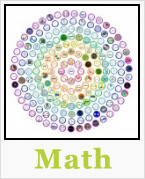



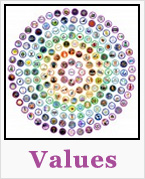
OPEN SOURCE CURRICULUM OUTLINES (click image for summaries and links to complete pages)
CARE
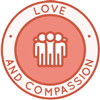
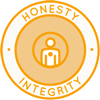
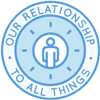
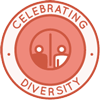
SHARE
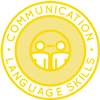
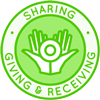
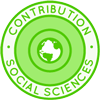
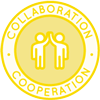
PLAY
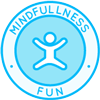
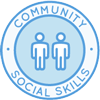
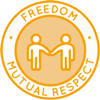
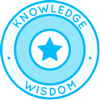
OPEN SOURCE TEACHING METHODOLOGY SUMMARIES
Montessori | Waldorf | Orff | Reggio | Multi-Intelligence | Bloom's Taxonomy | Study Tech | I-WE
INDEX OF ALL THE ONE COMMUNITY OPEN SOURCE LESSON PLANS

Click this image for the Lesson Plans for Life page with links to the rest of the lesson plans
THE WORLD'S LARGEST ONLINE FREE EDUCATION RESOURCE ARCHIVE
RELATED CONTENT AND OTHER RELATED RESOURCES
We're building this resource section. Click here if you have a suggestion or resource for this page.





































 One Community
One Community



